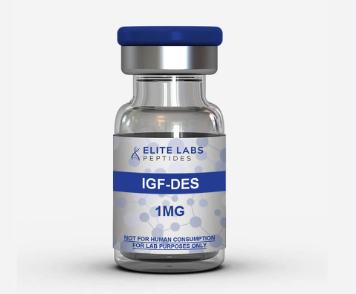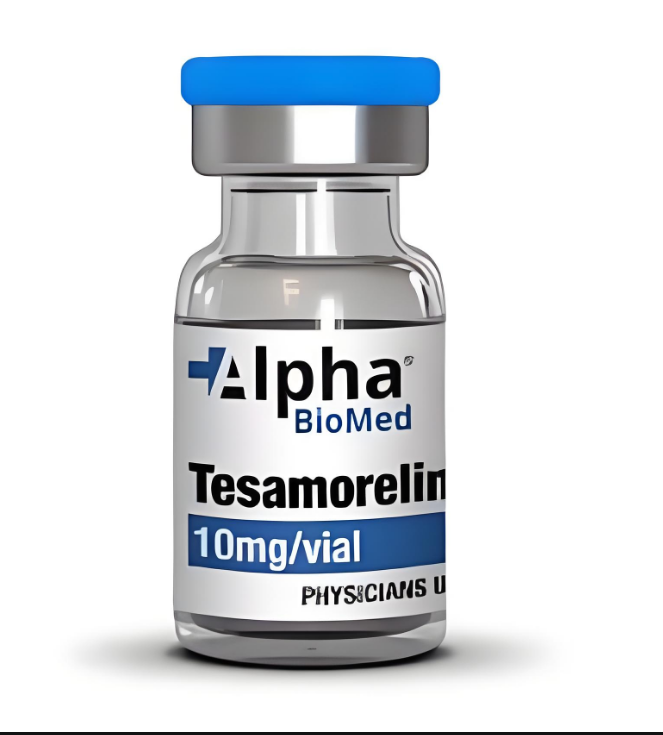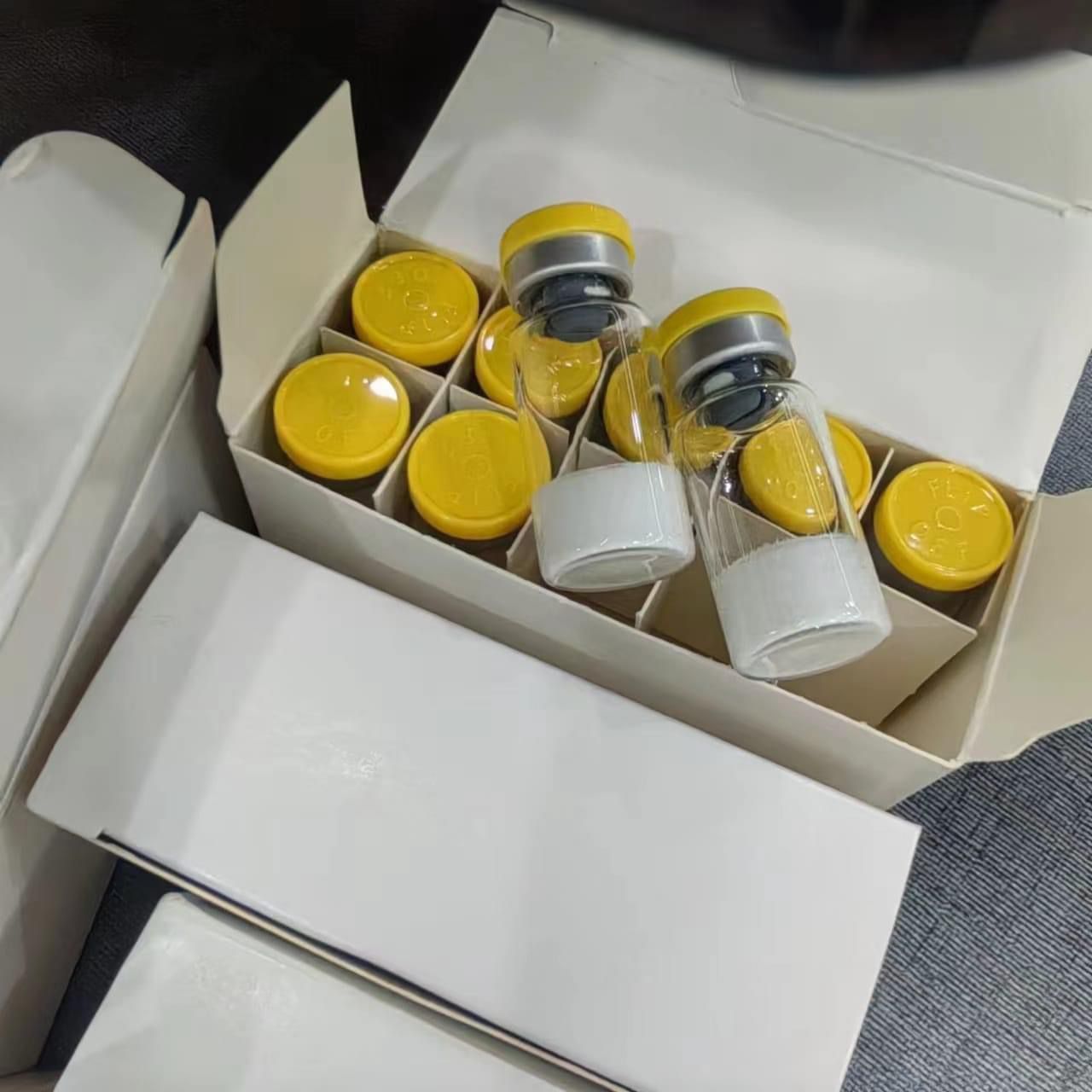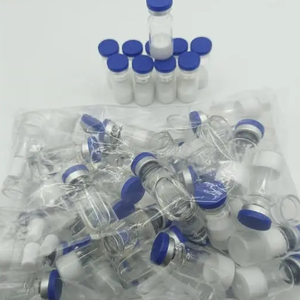Products

Sermorelin Acetate
Basic Info. Sermorelin is a synthetic (man-made) version of a naturally occurring substance that causes release of growth hormone from the pituitary gland. Growth hormone is naturally produced by the pituitary gland and is necessary for growth in children. In children who fail to grow normally because their bodies are not producing enough growth hormone, this medicine may be used to increase the amount of growth hormone produced by the pituitary gland. ...
Read more
AOD9604
Basic Info. AOD9604 is more effective than its predecessor AOD9401 in stimulating fat breakdown (fat burning) and anti fat generation activity. Like growth hormone. AOD9604 stimulates fat breakdown (fat breakdown or destruction) and inhibits fat production (preventing the conversion of fatty food materials into body fat) ...
Read more
GDF-8
Basic Info. GDF8, also known as myostatin, is a protein that regulates muscle growth. Inhibiting GDF8 or its receptors can promote muscle growth and repair, particularly in cases of muscle atrophy or injury. Studies suggest that GDF8 inhibition may also be beneficial in conditions like obesity, diabetes, and post-traumatic osteoarthritis. ...
Read more
Follistatin
Basic Info. Follistatin is a glycoprotein that functions as a potent inhibitor of the myostatin pathway, a key regulator of muscle growth. It binds to and neutralizes myostatin, preventing it from inhibiting muscle development. Follistatin also binds to other members of the TGF-¦Â superfamily, including activin A, growth differentiation factor 11 (GDF-11), and GDF- ...
Read more
IGF-1LR3
Basic Info. Long arginine 3-IGF-1, abbreviated as IGF-1 LR3 or LR3-IGF-1, is a synthetic protein and lengthened analogue of human insulin-like growth factor 1. The consequences of these modifications are that IGF-1 LR3 retains the pharmacological activity of IGF-1 as an agonist of the IGF-1 receptor, has very low affinity for the insulin-like growth factor-binding proteins (IGFBPs), and has improved metabolic stability. As a result, It is approximately three times more potent than IGF-1,and possesses a significantly longer half-life of about 20¨C30 hours. ...
Read more
IGF-DES
Basic Info. Des(1-3)IGF-1 is a naturally occurring, endogenous protein, as well as drug, and truncated analogue of insulin-like growth factor 1 (IGF-1).des(1-3)IGF-1 lacks the first three amino acids at the N-terminus of IGF-1 (for a total of 67 amino acids, relative to the 70 of IGF-1). As a result of this difference, it has considerably reduced binding to the insulin-like growth factor-binding proteins (IGFBPs) and enhanced potency (about 10-fold in vivo) relative to IGF-1. ...
Read more
Tesamorelin
Basic Info. Tesamorelin is the N -terminally modified compound based on 44 amino acids sequence of human GHRH. This modified synthetic form is more potent and stable than the natural peptide. It is also more resistant to cleavage by the dipetidy aminopeptidase than human GHRH. It stimulates the synthesis and release of endogenous GH, with an increase in level of insulin-like growth factor . The released GH then binds with the receptors present on various body organs and regulates the body composition. This regulation is mainly because of the combination of anabolic and lipolytic mechanisms. However, it has been found that the main mechanisms by which Tesamorelin reduces body fat mass are lipolysis followed by reduction in triglycerides level. ...
Read more
Ipamorelin
Basic Info. Ipamorelin is a peptide selective agonist of the ghrelin/growth hormone secretagogue receptor (GHS) and a growth hormone secretagogue. Ipamorelin significantly increases plasma growth hormone levels in both animals and humans. In addition, ipamorelin stimulates body weight gain in animals. Like pralmorelin and GHRP-6, ipamorelin does not affect prolactin, follicle-stimulating hormone , luteinizing hormone, or thyroid-stimulating hormone levels. However, unlike pralmorelin and GHRP-6, but similarly to growth hormone-releasing hormone , ipamorelin does not stimulate the secretion of adrenocorticotropic hormone, or cortisol, and is highly selective for inducing the secretion only of GH. ...
Read more
Hexarelin Acetate
Basic Info. Hexarelin Acetate is a synthetic hexapeptide in the growth factor family. It stimulates the release of growth hormone (GH) and does not interfere with the body's ability to produce its own GH. Structurally, Hexarelin (Hexarelin Acetate) is similar in structure to GHRP-6 but without the appetite increase because of its inability to drastically increase Ghrelin levels, which is responsible for the increased appetite and quicker gastric emptying. Hexarelin is a synthetic growth hormone secretagogue made from six amino acids. It contains powerful growth hormone-releasing properties in the human body. Hexarelin, in studies over a certain period, has shown that it reduces visceral fat. Hexarelin (Hexarelin Acetate), like other Growth Hormone Releasing Peptides, is most effective synergistically when administered with GHRH such as Sermorelin or Modified GRF 1-29. ...
Read more
GHK-CU
Basic Info. GHK-CU is a natural copper binding peptide composed of tripeptides (glycine, L-histidine, and L-lysine) and copper ions. GHK-CU is a beneficial skin care and beauty ingredient that can promote collagen production, accelerate wound healing, improve skin elasticity, and has antioxidant and anti-inflammatory effects. It is widely used in anti-aging products, wound care products, and hair care products. When using GHK-CU products, pay attention to allergic reactions and choose the appropriate concentration and product according to personal circumstances. ...
Read more
KissPeptin-10
Basic Info. Kisspeptin-10 is a decapeptide that plays a crucial role in the hypothalamic-pituitary-gonadal axis, stimulating the release of gonadotropins and, consequently, reproductive hormones. It is also known to have vasoactive properties , inhibiting angiogenesis and acting as a tumor metastasis suppress or. The studies indicate that kisspeptin-10 significantly increases the content of intracellular collagen in the myocardium. KiSS-10 also elevates the level of phosphorylated focal adhesion The inhibition of FAK negates the stimulatory effect of KiSS-10 on collagen deposition in vitro. ...
Read more
Thymalin
Basic Info. Thymulin (also known as thymic factor or its old name facteur thymique serique) is a nonapeptide produced by two distinct epithelial populations in the thymus first described by Bach in 1977. The hormone is believed to be involved in T-cell differentiation and enhancement of T and NK cell actions. Besides this rather paracrine or auto-organic effects on the thymus dependent immune system, thymulin seems to have neuroendocrine effects as well. There exist bidirectional interactions between thymic epithelium and the hypothalamus-pituitary axis. ...
Read moreTotal:10 page, with 109 products
Join Our Mailing List
For receiving our news and updates in your inbox directly.







